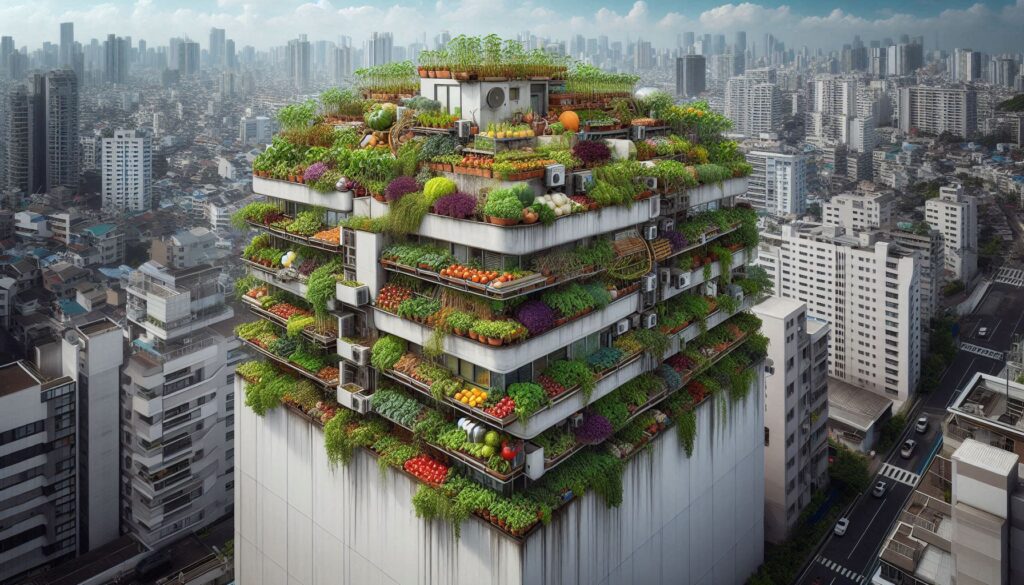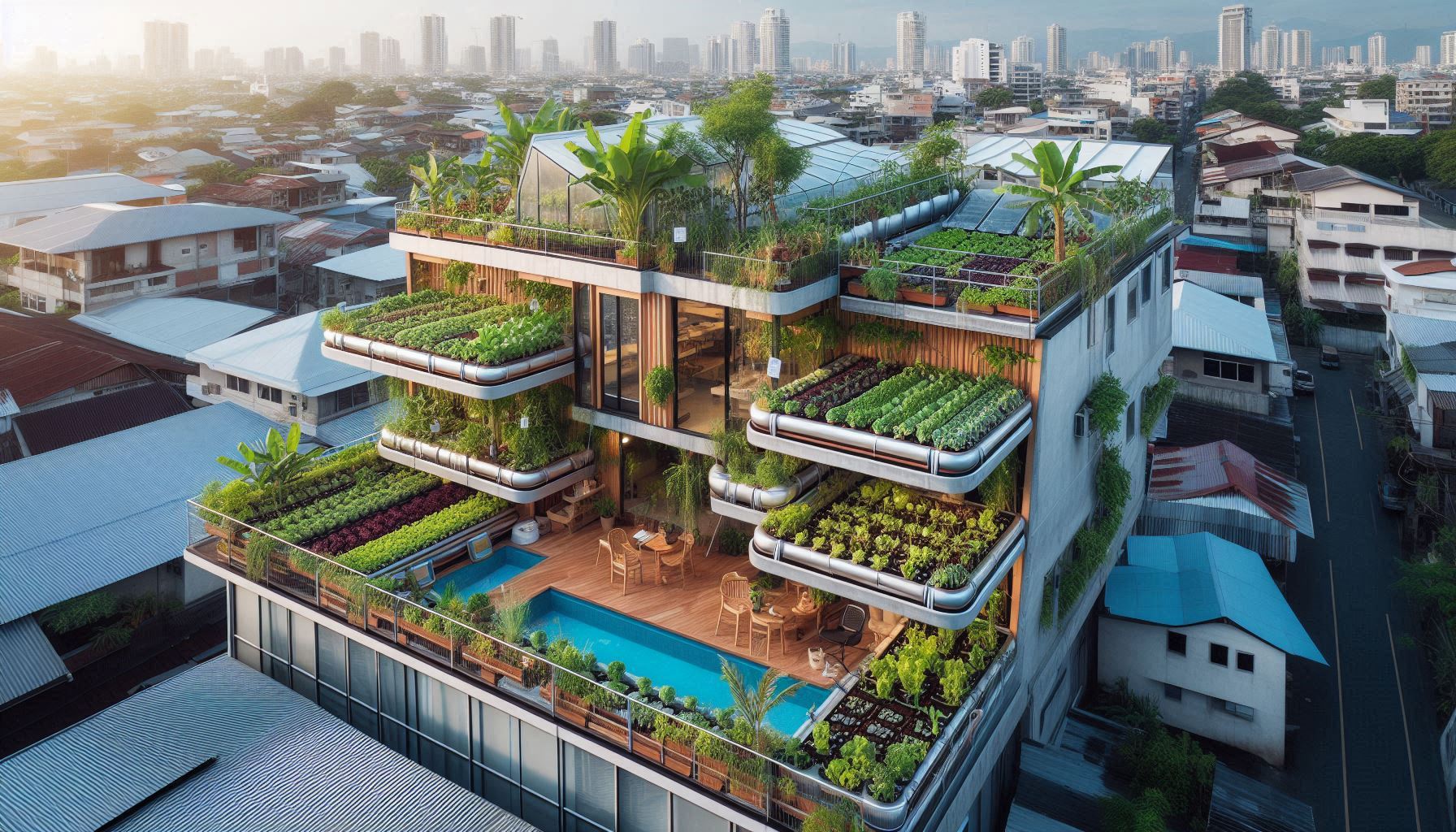In the dynamic landscape of urban environments, where space is at a premium and sustainability is paramount, rooftop vegetable patches are emerging as innovative solutions to food production, community building, and environmental stewardship. Transforming previously underutilized spaces into thriving gardens, these elevated farms not only contribute fresh, locally grown produce to city dwellers but also promote biodiversity, mitigate urban heat islands, and foster a deeper connection to nature amidst the concrete jungle. This article explores the concept of rooftop vegetable patches, their benefits, challenges, and inspiring examples from around the world.
The Rise of Rooftop Vegetable Patches
1. Introduction to Urban Farming:
Urban farming encompasses various methods of growing food within cities, including rooftop gardens, vertical farming, and community gardens. Rooftop vegetable patches utilize rooftops of buildings—ranging from residential complexes and commercial spaces to industrial buildings and schools—to cultivate vegetables, herbs, fruits, and sometimes even flowers.
2. Benefits of Rooftop Vegetable Patches:
- Access to Fresh Produce: By growing vegetables on rooftops, urban residents have access to fresh, nutritious produce that is locally grown and minimizes transportation emissions.
- Environmental Benefits: Rooftop gardens contribute to improved air quality, reduction of urban heat islands, and absorption of carbon dioxide, thereby mitigating climate change impacts.
- Community Engagement: These gardens often serve as focal points for community engagement, educational programs, and social activities, fostering a sense of belonging and environmental stewardship.
- Aesthetic and Recreational Value: Rooftop gardens enhance the visual appeal of buildings, provide recreational spaces for residents, and create habitats for pollinators and urban wildlife.
- Food Security and Resilience: Localized food production increases food security by reducing reliance on long-distance supply chains and enhances resilience against disruptions in food distribution.
Design and Implementation Considerations
1. Structural Integrity:
Before establishing a rooftop vegetable patch, it is crucial to assess the structural capacity of the building to support the additional weight of soil, plants, and irrigation systems. Structural engineers must ensure that the roof can withstand wind loads, water accumulation, and other environmental stresses.
2. Waterproofing and Drainage:
Proper waterproofing and drainage systems are essential to prevent water leakage into the building and manage excess water during heavy rains or irrigation. Waterproof membranes, drainage layers, and slope gradients ensure efficient water management.
3. Growing Medium and Containers:
Lightweight growing media, such as soilless mixes or compost blends, are often used in rooftop gardens to reduce weight and improve drainage. Containers such as raised beds, planter boxes, and fabric pots provide sufficient space for plant roots and facilitate air circulation.
4. Sunlight and Microclimates:
Assessing sunlight exposure and microclimatic conditions (e.g., wind patterns, temperature variations) on the rooftop is critical for selecting suitable crops and optimizing growing conditions. Certain vegetables require full sun, while others thrive in partial shade.
5. Irrigation and Water Efficiency:
Installing efficient irrigation systems, such as drip irrigation or soaker hoses, helps conserve water and deliver moisture directly to plant roots. Rainwater harvesting systems and greywater recycling can further supplement irrigation needs sustainably.

Choosing Suitable Crops for Rooftop Vegetable Patches
1. Leafy Greens:
Vegetables like lettuce, spinach, kale, and Swiss chard are well-suited for rooftop gardens due to their shallow root systems and preference for cooler temperatures.
2. Herbs:
Culinary herbs such as basil, parsley, cilantro, and thyme thrive in containers and can be harvested frequently for culinary use.
3. Tomatoes and Peppers:
These sun-loving vegetables can be grown in larger containers or raised beds on rooftops, provided they receive adequate sunlight and support for climbing varieties.
4. Root Vegetables:
Carrots, radishes, and beets can be grown in deeper containers filled with loose, well-draining soil to accommodate their root development.
5. Fruit Trees and Bushes:
Dwarf varieties of fruit trees (e.g., dwarf citrus, apple, or fig trees) and berry bushes (e.g., strawberries, blueberries) can be grown in large containers or fabric pots on rooftops, provided they receive sufficient sunlight and protection from wind.
Challenges and Solutions
1. Weight Restrictions:
Rooftops have weight restrictions, and excessive soil or water can exceed structural limits. Lightweight growing media and careful planning of irrigation systems mitigate this challenge.
2. Access and Logistics:
Transporting materials, equipment, and harvests to and from rooftop gardens may require logistical planning and elevator access. Establishing dedicated pathways and storage areas simplifies operations.
3. Climate and Microclimatic Variations:
Rooftops are exposed to temperature extremes, wind, and sunlight variations, which can affect plant growth. Using windbreaks, shade structures, and selecting climate-appropriate crops help manage these variations.
4. Maintenance and Care:
Regular maintenance, including watering, pruning, pest management, and soil fertility management, is essential for the health and productivity of rooftop gardens. Community involvement and volunteer programs can distribute responsibilities and foster ownership.
Case Studies of Successful Rooftop Vegetable Patches
1. Brooklyn Grange, New York City, USA:
Brooklyn Grange operates the world’s largest rooftop soil farms, spanning several rooftops in New York City. They grow a wide variety of vegetables and host educational programs, workshops, and events.
2. Lufa Farms, Montreal, Canada:
Lufa Farms operates rooftop greenhouses across Montreal, producing fresh vegetables year-round using hydroponic systems. They distribute produce through a subscription-based model to local residents.
3. Sky Greens, Singapore:
Sky Greens pioneered vertical farming on rooftops in Singapore, utilizing rotating vertical racks to grow leafy greens. Their innovative approach maximizes space efficiency and sustainable food production in urban areas.
Future Trends and Innovations
1. Vertical Farming Technologies:
Advancements in vertical farming technologies, such as hydroponics, aquaponics, and aeroponics, enable efficient use of space and resources for urban agriculture.
2. Integration with Building Design:
Architects and developers increasingly integrate rooftop gardens into new building designs to achieve sustainability certifications (e.g., LEED) and enhance property value.
3. Smart Agriculture:
The use of sensors, IoT (Internet of Things), and data analytics in rooftop farming enables real-time monitoring of environmental conditions and crop health, optimizing resource use and productivity.
4. Policy and Urban Planning:
Municipal policies and urban planning initiatives that support rooftop farming, such as zoning incentives and rooftop lease agreements, facilitate the expansion of urban agriculture in cities worldwide.
Rooftop vegetable patches represent a transformative approach to urban agriculture, harnessing underutilized spaces to grow fresh food, foster community connections, and promote environmental sustainability. By integrating principles of structural engineering, horticulture, and community engagement, these elevated gardens contribute to resilient, livable cities where residents can enjoy the benefits of locally grown produce and green spaces amidst the urban sprawl. As cities continue to expand and confront challenges related to food security and climate change, rooftop vegetable patches offer a scalable and innovative solution that celebrates the potential of urban landscapes to nurture both people and the planet.

